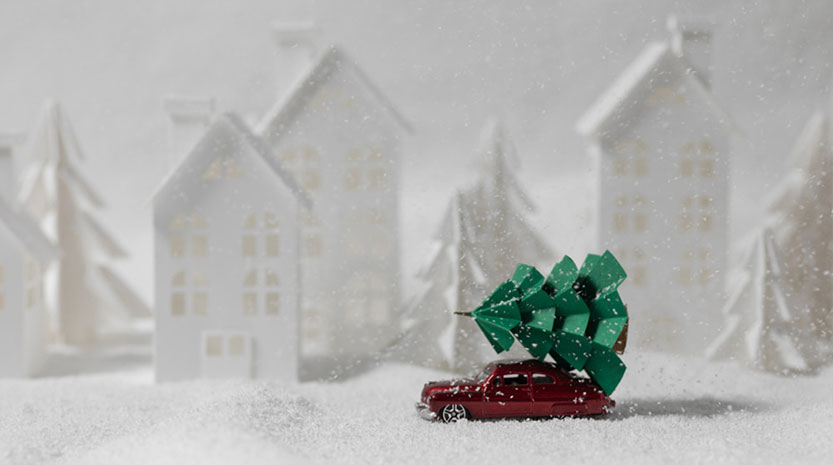‘Tis the season to be thankful. To be jolly. And to be in the car.
In fact, according to the United States Department of Transportation, the average Thanksgiving trip is about 214 miles, and the average Christmas/New Year’s destination is 275 miles away. What’s more, 91 percent of this travel is done by personal vehicle.
Translation?
Today, more and more people are driving more and more miles to celebrate with their friends and family — and for good reason.
So, before you head off for the holidays, brush up on some basic tips for safe winter driving:
- Before you travel, get a tune up. Make sure your wipers, lights, tires, brakes and battery are in good condition.
- Watch the weather report. Sometimes, winter weather can be too dangerous to drive through. Know what kind of alerts you should be aware of, such as:
- Winter weather advisories: Winter conditions that may be hazardous, but shouldn’t be life threatening.
- Winter storm watches: Severe winter conditions that may affect your area. These will be issued 12 to 36 hours before a major storm.
- Winter storm warnings: A storm bringing four or more inches of snow/sleet is expected in the next 12 hours, or six or more inches in 24 hours.
- Blizzard warnings: Snow and strong winds will produce blinding snow, deep drifts and a life-threatening wind chill.
- Pack an emergency kit. There are some things you should always keep in your car — just in case of emergency. (Things like flashlights, first-aid kits and foldable shovels.) See the complete list here.
- Travel with a charge. Make sure your cell phone is fully charged, and have a car charger on hand. If something happened and you needed to get in touch with someone, you’d need a method to do so.
- Get a good night’s sleep. Be totally rested before you hit the road.
- Fill up. Start your trip with a full tank of gas and enough windshield wiper fluid to last.
- See and be seen. Before getting behind the wheel, get your car out from behind any snow. Scrape any snow and ice from the hood, roof, bumper, lights, windows and windshields so you can see clearly, and so others can see you.
- Start your GPS before you start your car. Putting an address into your GPS takes your eyes off the road for too long. So, before you turn the key, turn on the navigation.
- Be aware of black ice. When the road ahead looks black and shiny, be cautious. Black ice is often found on the shaded areas of road after the sun has come out. If you find yourself sliding over it this season, don’t hit the brake. Simply lift your foot off the gas pedal and keep both hands firmly on the steering wheel.
- Keep off the cruise control. When roads are slippery, cruise control can actually do more harm than good. When it’s snowing or raining, it’s best for you to be in full control of the vehicle.
- Find the right speed. Not too fast, but not too slow. A good rule of thumb is to cut your normal speed in half. It’s safer, and it gives you enough momentum to keep moving forward.
- Know when to watch for deer. Throughout the fall and winter seasons, deer tend to be most active before sunrise and after sunset, while searching for food. If you’re driving early in the morning or late at night, be on the lookout.
- Give yourself enough time to stop. In bad weather, you could need anywhere between three to 12 times more space to come to a complete stop.
- Give yourself enough time to travel. When driving in the winter, you have to take extra precautions. And often times, those precautions take extra time. While planning your itinerary, account for slower speeds and potential delays.
- Avoid nighttime drives. Try to plan your trip so you arrive before 5 p.m. — right about when it starts getting darker (and right before the deer start making their way out again).
- Don’t drive alone. Whenever it’s possible, bring someone along for the ride. If you have to get where you’re going by yourself, at least let someone know when you’re leaving, so they have an idea when to expect you.
- Stop often. Make sure you’re making frequent stops to rest or rotate drivers.
- If you get stuck, stay inside. Believe it or not, the safest spot is inside of your car. Stay warm while you wait for help.
- Don’t share your travel plans on social media. Remember: The more details you share on social media, the more likely someone could break in while you’re away.
Ready to make the road trip? Before you go, read our blog: Keep your home safe while you’re away: 13 tips for travelers.


